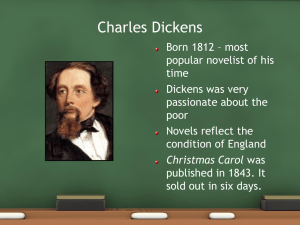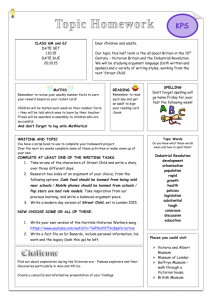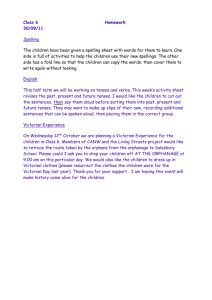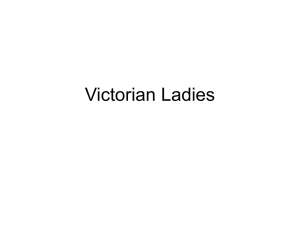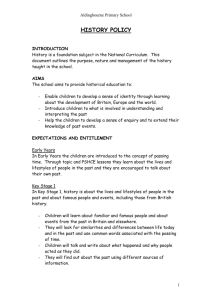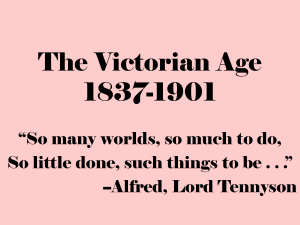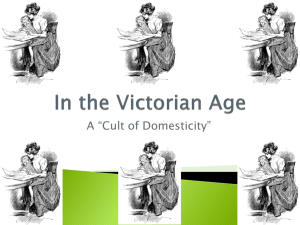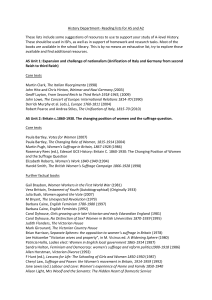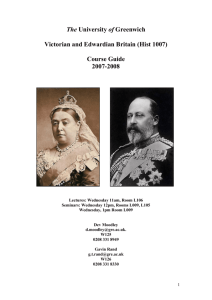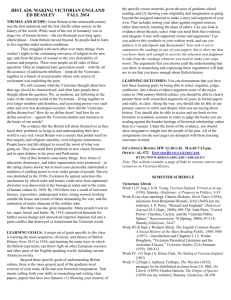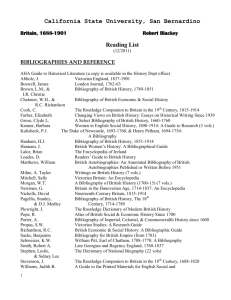The Victorian Period 1832-1901
advertisement
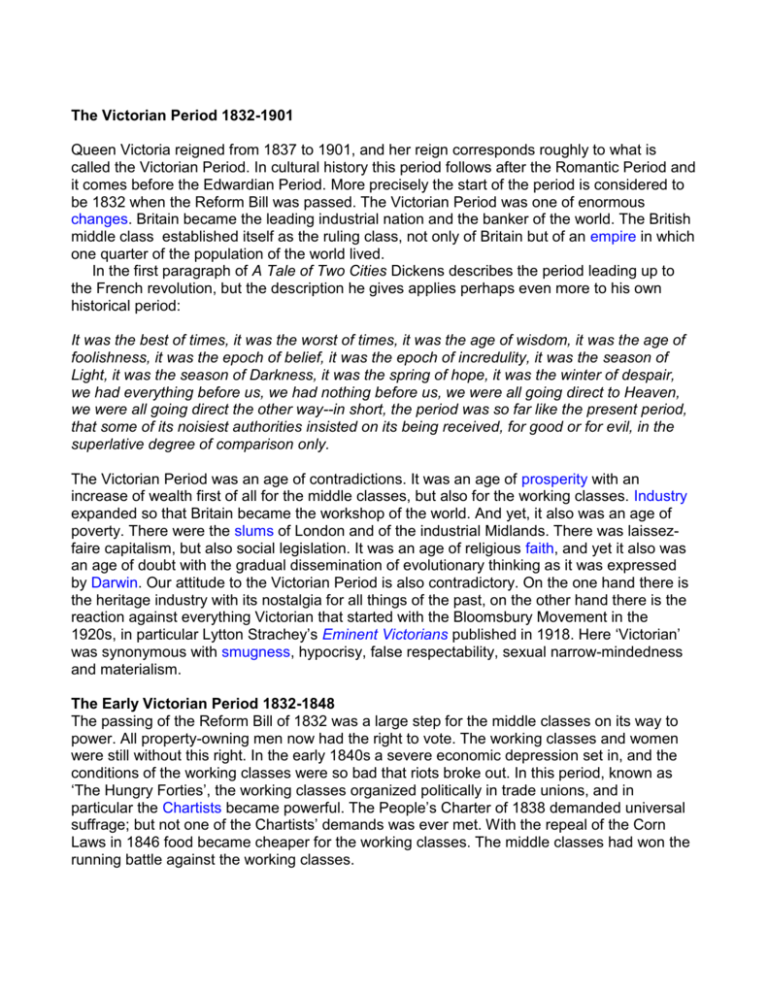
The Victorian Period 1832-1901 Queen Victoria reigned from 1837 to 1901, and her reign corresponds roughly to what is called the Victorian Period. In cultural history this period follows after the Romantic Period and it comes before the Edwardian Period. More precisely the start of the period is considered to be 1832 when the Reform Bill was passed. The Victorian Period was one of enormous changes. Britain became the leading industrial nation and the banker of the world. The British middle class established itself as the ruling class, not only of Britain but of an empire in which one quarter of the population of the world lived. In the first paragraph of A Tale of Two Cities Dickens describes the period leading up to the French revolution, but the description he gives applies perhaps even more to his own historical period: It was the best of times, it was the worst of times, it was the age of wisdom, it was the age of foolishness, it was the epoch of belief, it was the epoch of incredulity, it was the season of Light, it was the season of Darkness, it was the spring of hope, it was the winter of despair, we had everything before us, we had nothing before us, we were all going direct to Heaven, we were all going direct the other way--in short, the period was so far like the present period, that some of its noisiest authorities insisted on its being received, for good or for evil, in the superlative degree of comparison only. The Victorian Period was an age of contradictions. It was an age of prosperity with an increase of wealth first of all for the middle classes, but also for the working classes. Industry expanded so that Britain became the workshop of the world. And yet, it also was an age of poverty. There were the slums of London and of the industrial Midlands. There was laissezfaire capitalism, but also social legislation. It was an age of religious faith, and yet it also was an age of doubt with the gradual dissemination of evolutionary thinking as it was expressed by Darwin. Our attitude to the Victorian Period is also contradictory. On the one hand there is the heritage industry with its nostalgia for all things of the past, on the other hand there is the reaction against everything Victorian that started with the Bloomsbury Movement in the 1920s, in particular Lytton Strachey’s Eminent Victorians published in 1918. Here ‘Victorian’ was synonymous with smugness, hypocrisy, false respectability, sexual narrow-mindedness and materialism. The Early Victorian Period 1832-1848 The passing of the Reform Bill of 1832 was a large step for the middle classes on its way to power. All property-owning men now had the right to vote. The working classes and women were still without this right. In the early 1840s a severe economic depression set in, and the conditions of the working classes were so bad that riots broke out. In this period, known as ‘The Hungry Forties’, the working classes organized politically in trade unions, and in particular the Chartists became powerful. The People’s Charter of 1838 demanded universal suffrage; but not one of the Chartists’ demands was ever met. With the repeal of the Corn Laws in 1846 food became cheaper for the working classes. The middle classes had won the running battle against the working classes. Middle-class intellectuals debated the social issues of the Hungry Forties in the so-called Question-of-England novels, Mrs. Gaskell in Mary Barton (1848) and Benjamin Disraeli in The Two Nations (1845). The forties-frame-of-mind can still be found in Dickens’ novels from the 1860s. The Mid-Victorian Period 1848-1870 The period following the Hungry Forties was one of success and prosperity. Factory Acts by and by improved the conditions of the working classes so that child labour was limited and working hours were shortened. Trade, industry and farming prospered. Britain, which was industrialized by now, was able to make enormous profits by selling machinery and technology to Europe and America for their industrialization. The Mid-Victorian Period was peaceful. Britain managed to keep out of the wars on the Continent, and political freedom was such in Britain that political refugees from Europe, e.g., Karl Marx, found a safe haven here. The monarchy became a model of middle-class life. The novels of Anthony Trollope bear witness to the comfortable and commonsensical attitude full of optimism of the period. The Late Victorian Period 1870-1901 The late Victorian Period, which followed after Dickens’ death in 1870, brought an end to the progress and sense of stability of the previous 30 years. The middle classes met with crisis and problems on four fronts: military problems, economical problems, political problems, and sexual problems. Bismarck’s Germany with its naval expansion meant a threat to Britain’s supremacy. Europe and America were by now industrialized enough to be competitors instead of markets, which resulted in an economic depression. Internally the working classes organized in new militant trade unions and political parties. Even unskilled workers formed unions at the end of the century, and they won strikes. In 1889 the two great victories were The Match Girls’ Strike and the Dockers’ Strike. The Empire also created problems. It was the largest empire in history. It brought profits, but also brutal colonial wars, such as the Indian Mutiny and the Boer Wars. Gender roles were changing, too. Middle-class culture had its heart in the home with its patriarchal head, but during the 1870s laws improved women’s position economically and also some kinds of higher education were opened up to women. It was not, however, until 1928 that women got voting equality with men in Parliamentary elections.



